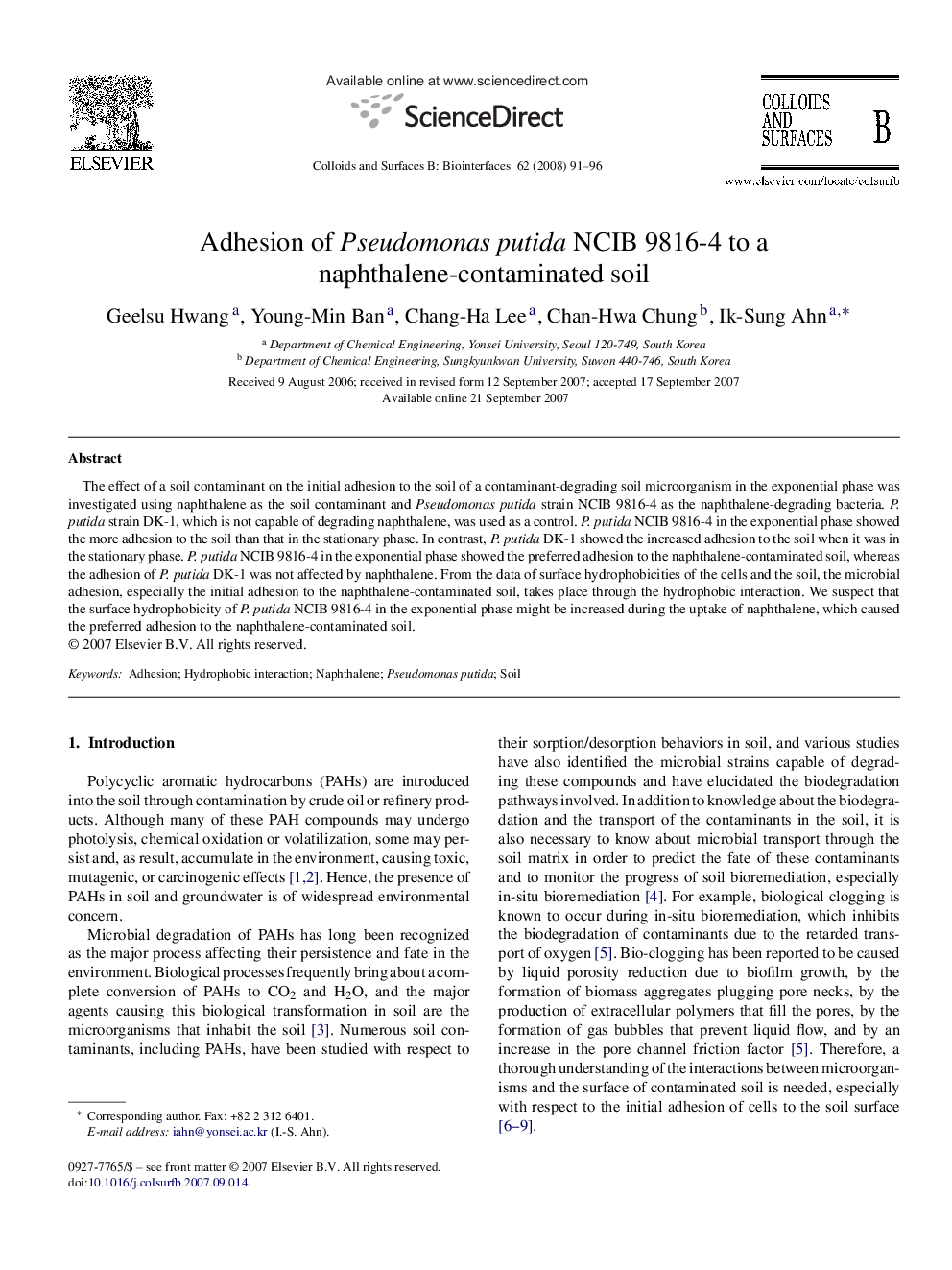| Article ID | Journal | Published Year | Pages | File Type |
|---|---|---|---|---|
| 602488 | Colloids and Surfaces B: Biointerfaces | 2008 | 6 Pages |
The effect of a soil contaminant on the initial adhesion to the soil of a contaminant-degrading soil microorganism in the exponential phase was investigated using naphthalene as the soil contaminant and Pseudomonas putida strain NCIB 9816-4 as the naphthalene-degrading bacteria. P. putida strain DK-1, which is not capable of degrading naphthalene, was used as a control. P. putida NCIB 9816-4 in the exponential phase showed the more adhesion to the soil than that in the stationary phase. In contrast, P. putida DK-1 showed the increased adhesion to the soil when it was in the stationary phase. P. putida NCIB 9816-4 in the exponential phase showed the preferred adhesion to the naphthalene-contaminated soil, whereas the adhesion of P. putida DK-1 was not affected by naphthalene. From the data of surface hydrophobicities of the cells and the soil, the microbial adhesion, especially the initial adhesion to the naphthalene-contaminated soil, takes place through the hydrophobic interaction. We suspect that the surface hydrophobicity of P. putida NCIB 9816-4 in the exponential phase might be increased during the uptake of naphthalene, which caused the preferred adhesion to the naphthalene-contaminated soil.
